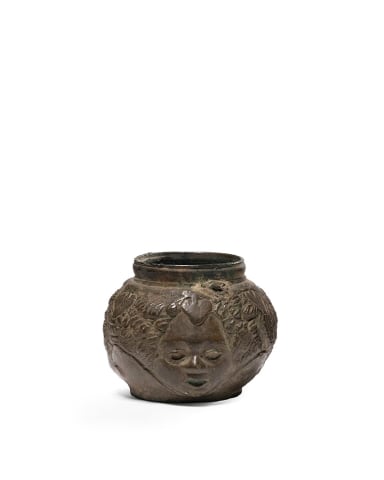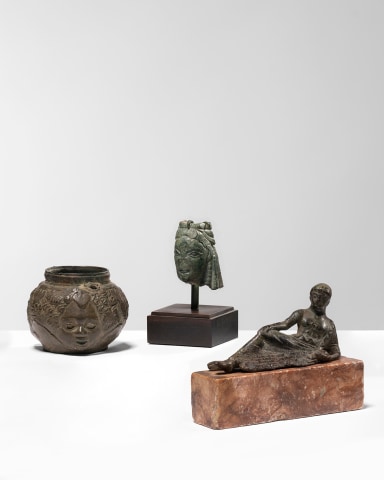A small, squat, round vessel rests on a base plate decorated with two concentric circles and a central disc marking the turning point. The shoulder and neck are concave, while the grooved rim is beveled outward. The body of the vessel features three Nubian heads, each with the lower half of the face pulled forward. Their faces are framed by elongated, twisted curls, and above each forehead lies a downward-pointing leaf. Additional leaves appear where the locks of hair from adjacent heads converge. A circular drill hole on the rim, of uncertain date, was likely made for suspension. Two casting flaws- or possibly ancient repairs- are visible on the rim of the vessel. There is an area of loss to a thin section of bronze on the proper left forehead of one of the faces.
This vessel, characterised by its three heads—in this instance, Nubian—belongs to a broader group of so-called 'head vessels'. Such vessels may bear two, three, or four heads, and in some examples, a single eye may be shared between adjoining faces. The heads depicted, unless representing Nubians, are most often associated with the Dionysian circle, as demonstrated by the examples published by Fremersdorf.
Provenance
R.S.L. collection, London, UK; acquired prior to 2000Accompanied by letters from the relevant Greek and Italian authorities renouncing any current or future claim over this piece.
Literature
For an example from the same workshop compare Heinz Menzel, Die Römischen Bronze bus Deutschland III Bonn (Mainz am Rhein, 1986), pl.107, no.232For further reading see F. Fremersdorf, Germania 25, 1941, 38 ff and H. Menzel, Trier [1966], no.166, pl.57



